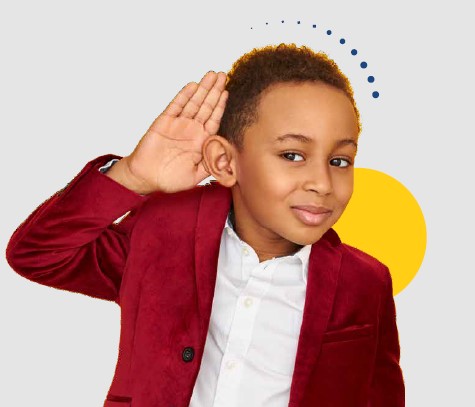The Impact of One-on-One Therapy for Kids with ASD: Transforming Lives
When it comes to children with Autism Spectrum Disorder (ASD), every little step toward improvement can feel like a giant leap. One-on-one therapy for kids with ASD has become a beacon of hope for many families navigating the complexities of autism. This individualized approach not only tailors therapy to meet the unique needs of each child but also fosters a nurturing environment where they can thrive at their own pace. By focusing on personalized support, techniques like Applied Behavior Analysis (ABA) have shown tremendous promise in helping children achieve significant milestones in behavior and skill development.
The beauty of one-on-one therapy lies in its tailored nature. Instead of a one-size-fits-all solution, each session is designed around the specific strengths and challenges of the child. This ensures that therapeutic interventions for ASD are both effective and engaging, leading to better outcomes over time. It’s like having a custom-fit shoe versus trying to squeeze into something that doesn’t quite fit—comfort and support make all the difference!
Studies suggest that children who engage in individualized therapy experience improved communication skills, enhanced social interactions, and greater emotional regulation. Notably, research indicates that early intervention can significantly impact developmental trajectories, making it crucial for families to explore options such as behavioral therapy for kids with ASD as soon as possible.
- Enhanced Communication: Specialized therapists use techniques that promote effective communication strategies tailored specifically for each child.
- Social Skills Training: Individualized sessions focus on real-life scenarios that help children navigate social interactions more effectively.
- Emotional Regulation: Therapeutic interventions teach coping mechanisms that empower children to manage anxiety and emotional outbursts.
Moreover, one-on-one therapy allows therapists to closely monitor progress and pivot strategies when needed—something group settings simply can’t offer. With the right support system in place, such as parent training and consultation from mental health professionals specializing in child autism care, families are equipped to reinforce learned behaviors at home.
The Power of Individualized Attention
This individualized attention doesn’t just benefit the child; it also offers peace of mind for parents who might feel overwhelmed by the complexities of supporting a child with ASD. Having a dedicated therapist means parents can rest assured knowing their child’s specific needs are being met consistently—no more guessing what works!
“The specific needs and challenges of children with ASD vary greatly,” says Autism Speaks. “Personalized care plans are vital!”
This is where organizations like العلاج السلوكي المتقدم step in, offering specialized ABA services designed to address the unique challenges faced by each child. Their team works collaboratively with families to create customized treatment plans that integrate various therapeutic modalities suited for their child’s developmental needs.
A Holistic Approach: More Than Just Behavioral Therapy
The transformative impact of one-on-one therapy for kids with ASD extends beyond just behavioral modifications; it encompasses emotional well-being too! Techniques such as play therapy autism have been shown to foster deeper connections between therapists and children, making learning fun while addressing serious developmental goals.
- Cognitive Behavioral Therapy (CBT): A valuable tool used alongside other treatments helps children manage anxiety effectively—after all, who doesn’t need a little help handling life’s little hiccups?
- Family Involvement: Engaging family members not only provides support but creates an environment conducive to learning—because let’s face it: teamwork makes the dream work!
- Diverse Modalities: From speech therapy for kids with autism to occupational therapy for autistic children, there are numerous avenues through which holistic growth can be achieved.
This collaborative effort creates a strong foundation upon which children’s skills can develop organically over time. And while access to appropriate therapeutic services may vary based on location or socioeconomic factors, initiatives aimed at providing comprehensive care continue evolving—including those offered by Advanced Behavioral Therapy.
The Journey Ahead: Lifelong Learning
If you’re exploring options for your child or seeking specialized support tailored to their unique journey through autism, feel free to reach out! The road may twist and turn along the way—but together we’ll ensure it leads directly toward success!
Understanding One-on-One Therapy for Kids with ASD
Understanding one-on-one therapy for kids with ASD goes beyond just a series of sessions; it’s about creating a tailored experience that meets each child right where they are. The essence of this approach lies in its individualization, allowing therapists to focus on the child’s specific skills, interests, and challenges. It’s akin to having a personal coach who knows when to push you harder and when to celebrate your victories—big or small!
One-on-one therapy allows children with Autism Spectrum Disorder to engage in a supportive environment where they can learn at their pace. This is crucial because the needs of children with ASD are as diverse as the spectrum itself. A study from Autism Speaks highlights that “the specific needs and challenges of children with ASD vary greatly,” making individualized therapy essential for effective intervention.
The Method Behind the Magic
So, how does one-on-one therapy work its wonders? Here are components:
- Customized Goals: Each child has unique developmental milestones that they aim to reach. By setting personalized goals based on these milestones, therapists can create strategic plans that target areas like communication skills development in ASD children. Think of it as crafting your own adventure story—complete with quests tailored just for you!
- Real-Time Feedback: The immediacy of one-on-one interactions allows therapists to provide instant feedback, reinforcing positive behaviors as they happen. This might involve redirecting a child who is feeling overwhelmed or celebrating a successful communication attempt.
- Diverse Techniques: From play therapy autism methods to applied behavior analysis (ABA) techniques, therapists have a toolkit filled with strategies designed specifically for each child’s preferences and learning styles.
The Family Connection
One-on-one therapy doesn’t just impact the child—it also transforms family dynamics! The involvement of parents is paramount; research shows that parent training and support are crucial components of successful intervention for children with ASD. When parents understand the techniques being used in therapy, they can reinforce these strategies at home, creating a consistent learning environment.
“With proper guidance and training, families can become powerful allies in their child’s developmental journey,” states experts in pediatric autism treatment.
This partnership encourages open communication between families and therapists, ensuring everyone is on the same page regarding strategies and progress. When parents feel informed and supported, it not only eases their concerns but also creates an empowering atmosphere where both parents and children can thrive.
The Broader Impact
The beauty of one-on-one therapy extends into broader societal benefits as well! By equipping children with effective coping mechanisms and social skills through individualized sessions, we’re nurturing future community members who will contribute positively to society. It’s like planting seeds today that will grow into strong trees tomorrow—each unique yet collectively enhancing our world.
If you’re curious about how one-on-one therapy can make a difference for your child or if you’d like guidance on starting this journey together, don’t hesitate to connect with us at العلاج السلوكي المتقدم. After all, every step counts when it comes to transforming lives!
The Science Behind Behavioral Therapy for Kids with ASD
When we delve into the science behind behavioral therapy for kids with ASD, it’s like peeling back the layers of an onion—each layer revealing more about how tailored interventions can lead to transformative outcomes. At its core, the underlying principle of one-on-one therapy for kids with ASD is rooted in evidence-based practices, particularly Applied Behavior Analysis (ABA). What’s fascinating is how this method draws from behavioral psychology to modify specific behaviors and teach new skills in a structured environment.
The Research Speaks Volumes
Did you know that studies have shown ABA therapy can significantly improve social skills, communication abilities, and daily living skills in children with ASD? A comprehensive report by Autism Speaks emphasizes that “Applied Behavior Analysis is a common evidence-based intervention for children with autism,” demonstrating its effectiveness across various scenarios. This means that when your child participates in one-on-one therapy sessions, they are not just receiving guidance but are engaging in a scientifically-supported process aimed at measurable improvements.
- Targeted Skill Development: One-on-one therapy allows therapists to hone in on particular skills that need attention. Whether it’s enhancing communication or managing emotions, each session is designed to address those needs directlyli>
- Data-Driven Progress Monitoring: Therapists meticulously track progress during sessions—think of it as having a GPS guiding the way! This data helps adjust strategies promptly to ensure optimal engagement and learning.
The Nuances of Individualized Therapy
The beauty of individualized therapy for ASD lies in its flexibility. Each child presents unique challenges and strengths; thus, therapists can adapt their methods based on real-time observations and feedback. For example:
- Behavioral Interventions: Specific behavior modification techniques are employed based on what works best for each child—like finding the right key for a lock!
- Cognitive Behavioral Therapy (CBT): Integrating CBT helps children tackle anxiety and emotional challenges, which is crucial since many children on the spectrum experience heightened sensitivity to stressors.
“Cognitive Behavioral Therapy (CBT) can help children with ASD manage anxiety and other emotional challenges,” states research from the National Institute of Mental Health (NIMH). This highlights how therapeutic methods work symbiotically to support emotional well-being alongside behavioral growth.
The Power of Parent Engagement
A significant aspect of successful behavioral therapy is the involvement of parents. As noted by Autism Speaks, “parent training and support are crucial components of successful intervention.” When parents engage actively in their child’s therapeutic journey, they reinforce learned behaviors at home, creating a consistent environment where skills can flourish off the therapy mat as well!
- Support Networks: Family members become powerful allies when equipped with knowledge. By understanding the methods used in therapy sessions, they provide reinforcement outside those walls—turning everyday moments into valuable learning opportunities!
- A Safe Space: Open communication between therapists and families fosters trust and ensures everyone is aligned during this learning journey. Because who doesn’t want a supportive cheerleading squad?
The Bigger Picture: Long-Term Impact
The lasting effects of one-on-one behavioral therapy extend far beyond immediate gains. As children develop essential life skills through tailored interventions, they not only navigate their world more effectively but also enhance their quality of life overall. Imagine equipping them today so they can thrive tomorrow—it’s like handing them a toolbox filled with everything they need to succeed!
This journey toward personalized care isn’t just about addressing immediate challenges; it lays foundational stones for lifelong learning experiences that empower children to face whatever comes their way.
If you’re considering options for your child’s therapeutic journey or looking for specialized services aligned with their unique needs, check out what we offer at العلاج السلوكي المتقدم. We’re here to support families every step of the way as we collectively pave paths toward brighter futures!
The Role of Specialized Therapists for Kids with Autism
Specialized therapists play a crucial role in the lives of children with Autism Spectrum Disorder (ASD). They’re not just professionals armed with degrees; they’re your child’s biggest advocates, skilled navigators through the often tumultuous waters of autism. With one-on-one therapy for kids with ASD, these dedicated individuals tailor their approach to meet the unique needs of each child—like a perfectly fitted puzzle piece that brings clarity to the bigger picture!
The Expertise That Counts
Imagine having a coach who understands every nuance of your game, ready to guide you toward success. That’s precisely what specialized therapists offer! These professionals are trained in various therapeutic modalities, including:
- Applied Behavior Analysis (ABA): This method focuses on reinforcing desired behaviors while reducing unwanted ones through positive reinforcement techniques.
- Cognitive Behavioral Therapy (CBT): CBT equips children with tools to manage anxiety and navigate social situations effectively—because who wouldn’t want a secret weapon for handling life’s curveballs?
- Play Therapy: Engaging children through play fosters connection and communication, making it easier for them to express themselves in ways that feel safe and fun.
A Personalized Approach
One of the greatest strengths of working with specialized therapists is their ability to design personalized care plans for autistic youth. No two children are alike, and these plans reflect that diversity. Each session is thoughtfully crafted based on:
- Individual Interests: By incorporating your child’s hobbies or favorite activities into therapy sessions, progress becomes more engaging—and let’s be honest, who doesn’t love a little fun while learning?
- Progress Tracking: Therapists monitor achievements closely, adapting strategies as necessary to ensure continued growth—like fine-tuning an elaborate recipe until it tastes just right!
- Family Collaboration: Specialized therapists often work hand-in-hand with families, providing guidance and training so parents can reinforce skills at home—because teamwork makes the dream work!
The Emotional Connection
An essential component of successful therapy lies in forming genuine connections. Specialized therapists cultivate trust and understanding with their young clients, which paves the way for deeper engagement. This emotional bond creates a safe space where children feel comfortable exploring new skills without fear of judgment.
“The relationship between the therapist and child is vital for success,” emphasizes leading experts in autism treatment. “It’s not just about techniques; it’s about trust.”
Navigating Challenges Together
The journey through ASD can be laden with challenges, but having a specialized therapist alongside your child can make all the difference! From addressing behavioral issues to enhancing communication skills development in ASD children, these professionals guide families through hurdles that might otherwise seem insurmountable.
- Sensory Processing Issues: Many children with autism experience sensory overload. Specialized therapists implement strategies to help children cope—like finding creative ways to navigate noisy environments or bright lights!
- Smoothing Transitions: Whether it’s moving from one activity to another or preparing for changes at school, specialized support helps ease difficult transitions—think of it as having a personal GPS guiding you through traffic jams!
If you’re seeking effective interventions tailored specifically for your child’s needs, consider reaching out to our team at العلاج السلوكي المتقدم. Our specialized therapists are committed to helping your child thrive by utilizing individualized therapy for ASD that addresses both behavioral growth and emotional well-being.
The impact these professionals have is profound—they don’t merely provide therapy; they inspire hope and transform lives one session at a time! So remember: every small step forward counts in this journey toward success.
Benefits of Individualized Attention Through One-on-One Sessions
When it comes to the journey of children with Autism Spectrum Disorder (ASD), individualized attention through one-on-one sessions offers a myriad of benefits that can significantly enhance their development. Imagine having a dedicated coach who understands your unique playbook—this is exactly what personalized therapy provides for kids navigating the complexities of autism.
Tailored Learning Experiences
One of the most compelling advantages of individualized therapy for ASD is its tailored nature. Children are not just participants in a generic program; instead, each session is crafted specifically for their strengths, interests, and challenges. This personalized approach ensures:
- Focused Skill Development: Every child has different areas needing improvement. Whether it’s enhancing social skills, communication techniques, or emotional regulation, therapists can hone in on specific goals tailored to each child’s unique requirements.
- Engagement and Motivation: Personalized sessions often incorporate a child’s favorite activities or interests, making learning enjoyable! Think of it as pairing broccoli with cheese—suddenly, what may seem daunting becomes delightful!
Consistent Progress Monitoring
In a one-on-one setting, therapists can closely monitor progress in real-time. This means they are able to:
- Adjust Strategies Quickly: If something isn’t working well or if the child seems disengaged, therapists can pivot seamlessly to more effective approaches—like switching gears on a road trip when encountering unexpected roadblocks!
- Reinforce Positive Behaviors: Immediate feedback helps consolidate learning. Therapists can celebrate small victories right when they happen, reinforcing positive behavior and encouraging kids to keep striving for success.
A Safe Space for Expression
The emotional connection cultivated through one-on-one sessions provides a safe environment where children feel comfortable expressing themselves without fear of judgment. Not only does this promote open communication but it also enables kids to explore their emotions more freely—a crucial aspect of emotional regulation.
“The therapist-child relationship is vital,” says Dr. Sarah Johnson, a child psychologist specializing in autism therapy. “When children feel safe and understood, they are more willing to engage and explore new skills.”
The Family Connection: Collaboration Is Key
A significant benefit of individualized attention is the enhanced collaboration between therapists and families. By keeping parents informed about strategies used in therapy sessions, families can reinforce these techniques at home—creating consistency that truly amplifies progress!
- Empowerment Through Knowledge: When parents understand how to apply learned skills at home through parent training and support programs, they become powerful allies in their child’s journey.
- A Team Approach: Regular check-ins between therapists and families foster open communication about what’s working well and what might need adjustment—because navigating this adventure together makes all the difference!
The Long-Term Impact on Life Skills
The impacts of individualized attention extend far beyond immediate gains; these therapeutic interventions lay the groundwork for lifelong learning. As children build essential life skills through consistent one-on-one therapy sessions, they gain confidence that translates into everyday situations—be it at home or in school settings.
This is where organizations like العلاج السلوكي المتقدم step into play! Their commitment to providing specialized ABA services ensures that every child receives the focused attention necessary for meaningful growth.
If you’re considering how one-on-one therapy could benefit your child with ASD or if you’re ready to explore just for them, remember: every little step counts toward creating impactful change! Together, we can pave paths filled with success and opportunity!
Integrating Family Involvement in Autism Therapy
Integrating family involvement in autism therapy is like adding secret sauce to a recipe—it enhances the flavor and creates a richer experience for everyone involved! When families actively participate in one-on-one therapy for kids with ASD, the benefits extend far beyond the therapy room, creating a cohesive support network that fosters growth and development.
The Family as a Core Support System
Families play an essential role in reinforcing skills learned during therapy sessions. When parents understand the goals of one-on-one therapy, they can effectively implement strategies at home, ensuring continuity in their child’s learning journey. Research shows that children with ASD are more likely to thrive when their families are engaged in their therapeutic processes. Here’s how:
- Consistent Reinforcement: Skills practiced during therapy can be reinforced at home through everyday activities, turning life into a continual learning experience. Whether it’s practicing social skills during family game night or using communication techniques during meals, these moments count!
- Open Communication: Creating an environment where families feel comfortable discussing progress allows therapists to adjust interventions based on real-life observations. This collaboration helps tailor strategies more effectively to meet the child’s unique needs.
A Team Effort: Therapists and Families Unite
At organizations like العلاج السلوكي المتقدم, therapists emphasize collaborative approaches that involve training and supporting parents throughout the therapeutic journey. This teamwork fosters an atmosphere of trust and commitment—because let’s face it: nobody wants to go it alone!
“When families participate actively, they not only support their child but also empower themselves with knowledge,” notes experts in developmental disability support services.
This empowerment translates into effective interventions that align with the child’s interests and challenges. For instance, integrating elements from favorite games into practice can motivate kids to engage fully—who wouldn’t want to learn while playing?
Creating Family-Centered Goals
Another vital aspect involves setting family-centered goals that reflect shared aspirations for the child’s development. These could include:
- Social Interaction Goals: Focusing on engaging siblings or peers in structured play can enhance social skills while strengthening familial bonds.
- Coping Strategies for Anxiety: Parents can work together with therapists to establish techniques for managing anxiety during family outings or school events—because everyone knows that unexpected meltdowns are less fun when they happen in public!
The Emotional Bond: More Than Just Skills
A key benefit of integrating family involvement is its impact on emotional well-being. Children who feel supported by both their therapist and family members often exhibit increased confidence and resilience. The emotional connections formed during this collaborative effort create secure attachments crucial for healthy development.
“Children thrive in environments where they feel understood and supported,” states leading psychologists specializing in autism spectrum disorder counseling.
The Ripple Effect of Engagement
The positive outcomes don’t stop at individual progress; family involvement also nurtures stronger relationships among family members. As everyone learns together about autism spectrum disorders and effective coping strategies, it fosters empathy, understanding, and patience within the household.
This ripple effect creates an inclusive environment where all family members feel valued—because let’s be honest: life is better when you’re all on the same team!
Your Journey Together
If you’re interested in exploring how to integrate your family’s involvement into your child’s therapeutic journey or if you’re looking for specialized support tailored just for them, remember: teamwork truly makes the dream work! With consistent effort from both families and professionals, we can create meaningful pathways toward success.
Together, we’ll ensure every small step leads to significant transformations—not just for your child but for your entire family unit!
The Long-term Impact: Transforming Lives Beyond Therapy Sessions
The long-term impact of one-on-one therapy for kids with ASD extends far beyond the therapy sessions themselves; it creates a ripple effect that transforms lives in profound ways. Think of it as planting a seed today that blossoms into a flourishing tree tomorrow—providing shade, shelter, and sustenance for years to come.
Empowering Independence
One of the most remarkable outcomes of individualized therapy is the empowerment it offers children on the autism spectrum. By focusing on personalized goals, these sessions help kids develop essential life skills that foster greater independence. This journey toward autonomy begins with:
- Self-Advocacy Skills: As children learn to express their needs and preferences effectively, they become better equipped to navigate various environments, be it at school or in social settings.
- Daily Living Skills: From managing personal hygiene to preparing simple meals, these foundational skills enable children to participate more actively in their own lives.
The increased independence contributes significantly to self-esteem and confidence, allowing children with ASD to take pride in their accomplishments—however small they may seem. Like a snowball rolling down a hill, these gains accumulate over time, leading to greater achievements down the road!
Building Stronger Relationships
Another critical aspect of long-term success is improved interpersonal relationships. Therapy sessions not only focus on individual growth but also emphasize social skills training for autistic kids. This targeted approach cultivates:
- Meaningful Friendships: Children learn how to initiate conversations, share interests, and understand nonverbal cues—crucial components in forming lasting connections.
- Family Bonds: As parents are trained alongside their children, family dynamics can shift positively. Increased understanding fosters empathy and collaboration within the family unit.
“Social skills are vital for navigating life’s complexities,” says experts in pediatric autism treatment. “When kids form meaningful relationships, they build support networks that last a lifetime.”
Navigating Life’s Challenges with Resilience
The ability to cope with challenges is another significant outcome of one-on-one therapy for kids with ASD. Through therapeutic interventions like cognitive behavioral therapy (CBT) and emotional regulation strategies, children equip themselves with tools necessary for:
- Coping Mechanisms: Learning how to manage anxiety or frustration empowers kids during stressful situations—be it an unexpected change at school or social interactions that feel overwhelming.
- Adaptability: The skills gained during therapy enable children to approach new experiences with confidence rather than apprehension—a critical component as they transition into adulthood.
This resilience not only helps them navigate immediate challenges but also lays the groundwork for future successes in life’s unpredictable landscape.
A Brighter Future Awaits
The cumulative effect of one-on-one therapy transforms not just individual lives but entire communities as well! As children gain skills and confidence through tailored interventions, they become empowered participants in society—ready to contribute positively rather than merely adapt.
This broader impact is why seeking specialized services from organizations like العلاج السلوكي المتقدم is crucial. Their commitment ensures that families have access to comprehensive care designed specifically for each child’s unique journey through autism spectrum disorder.
The Journey Continues
If you’re considering how one-on-one therapy can pave the way toward transformative changes or seeking guidance on your child’s path forward, remember: while each step may seem small today, together we can create monumental shifts for tomorrow! Embracing this journey opens doors filled with hope and possibility—the sky truly is the limit!









